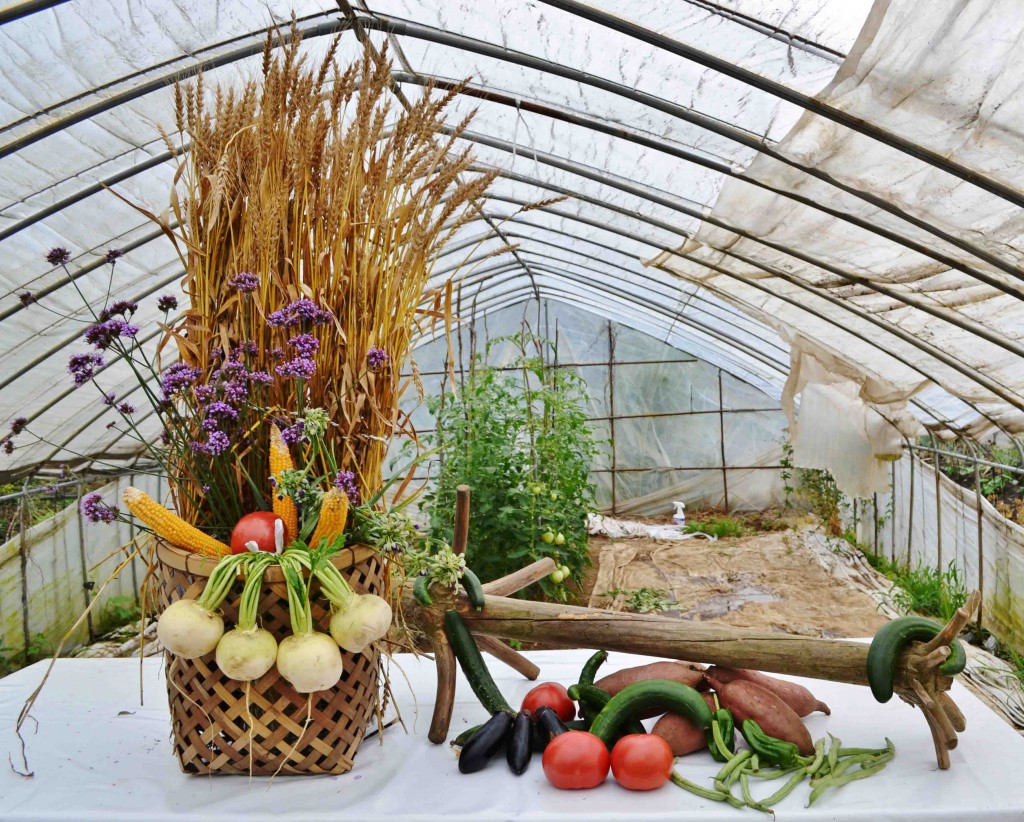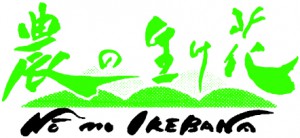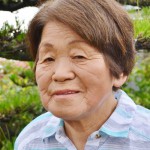
Containers and tools: a bamboo basket and a wooden bar for washing potatoes, etc.
Materials: tomatoes, cucumbers, eggplants, tunips, corn, sweet potatoes, sugar peas, wheat, Asiatic dayflowers, etc.
 <Noh no Ikebana” is an art of arranging agricultural products together with agricultural implements and other familiar instruments. It’s a type of Ikebana but mainly for farmers. The series “Noh no Ikebana” will show you how to best feature the materials and containers you choose, with the help of fans of this style of Ikebana nationwide.>
<Noh no Ikebana” is an art of arranging agricultural products together with agricultural implements and other familiar instruments. It’s a type of Ikebana but mainly for farmers. The series “Noh no Ikebana” will show you how to best feature the materials and containers you choose, with the help of fans of this style of Ikebana nationwide.>
Fresh fruit vegetables often come in bright colors and are suitable for the arrangement to highlight the power of the agricultural products. Yellow corn, green peppers and red tomatoes are good examples.
I try to keep their original shape when I use them in the arrangement. When I have a turnip or a Japanese radish, I often keep the leaves or roots. When I use ears of corn, I don’t remove corn silk. They look a lot more powerful that way.
You can also use tomatoes, eggplants, and cucumbers on the stems, too.
For containers, choose something deep such as bamboo baskets or big jars to “thrown in” the materials as we do in the nageire (throw-in) style ikebana arrangement. Make sure to pour a lot of water in the containers. When using a basket, put a cylindrical pot in the basket.
If you want to remove the stems or the roots, you can choose the vegetables in strong colors as accents by placing them in front of the main characters, or put them right next to the containers to make the arrangement broader.
Theme colors for this summer arrangement are yellow for the strong sunshine, green for plants and trees and red for the sun itself, like three colors in signals. Flowers in cool colors such as hydrangea and Asiatic dayflowers can be used to add blue to express cloudless clear sky.
<Containers and tools>
a bamboo basket and a wooden bar for washing potatoes, etc.
Materials: tomatoes, cucumbers, eggplants, tunips, corn, sweet potatoes, sugar peas, wheat, Asiatic dayflowers, etc.
<Profile>
Eiko Tomita, 78, began No no Ikebana in 1975. Visits local elementary schools and welfear facilities as an instructor.


